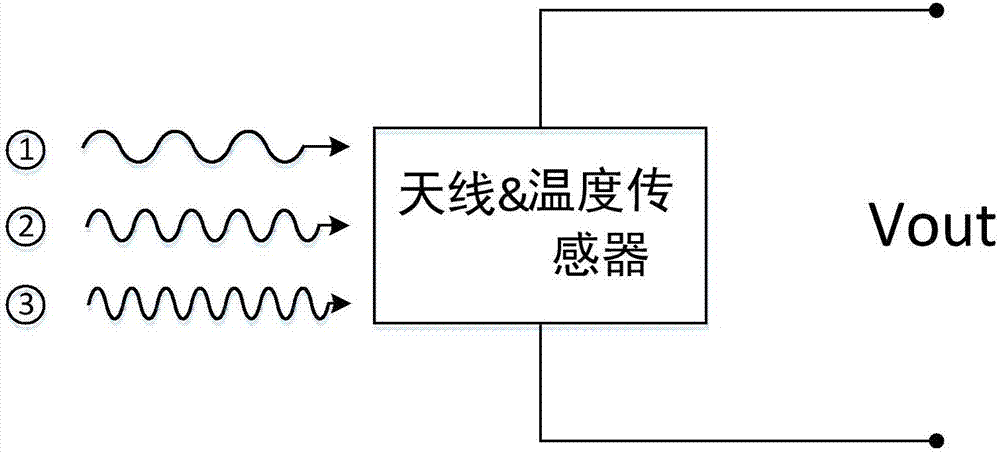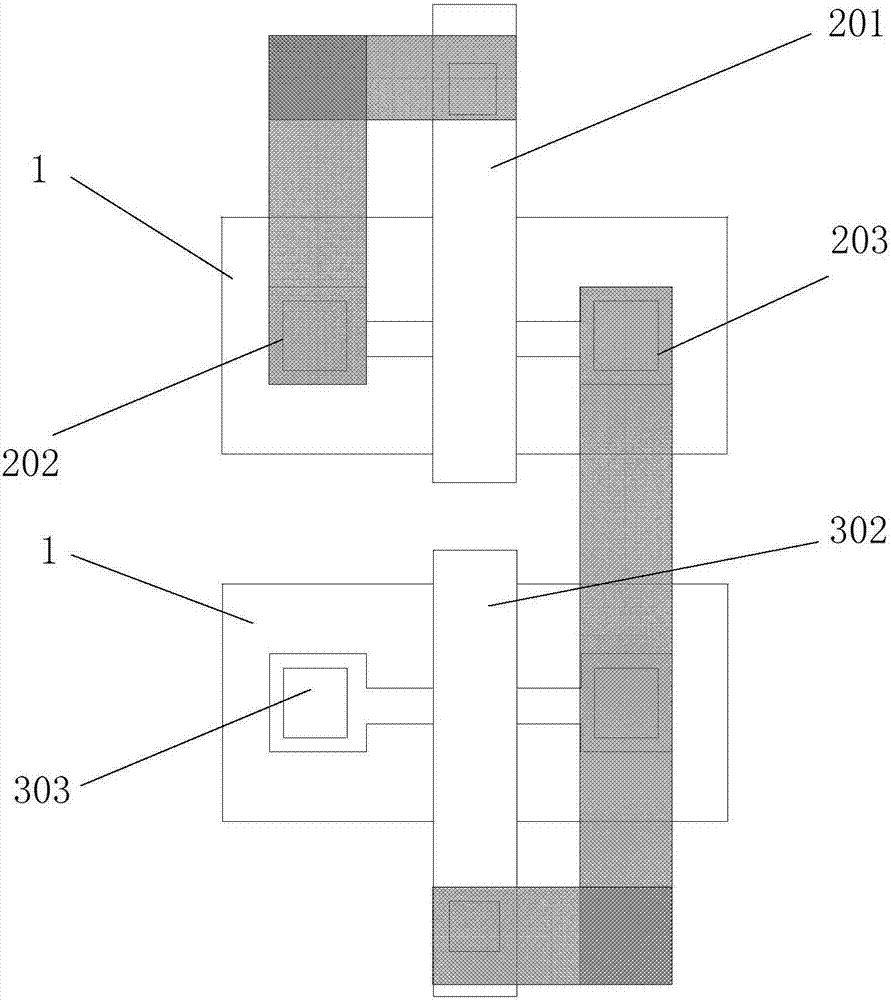Terahertz detector with integration of dipole antennas and NMOS temperature sensor
A technology of terahertz detectors and dipole antennas, applied in the field of terahertz detectors, can solve problems such as increased cost, complexity, and large chip area, and achieve the effects of enhanced temperature detection capabilities, reduced costs, and area savings
- Summary
- Abstract
- Description
- Claims
- Application Information
AI Technical Summary
Problems solved by technology
Method used
Image
Examples
Embodiment 1
[0035] A terahertz detector integrating a dipole antenna and an NMOS temperature sensor, including a silicon substrate and a first NMOS transistor 2 and a second NMOS transistor 3 arranged on a silicon substrate 1; at a frequency of 2.66THz, According to formula (3) and formula (4), it can be obtained that the arm length of the corresponding dipole antenna (ie, the gate length of the first and second NMOS transistors) is 14.5um. After simulation, the distance between the two antennas (the distance between the grids of the first and second NMOS transistors) is 1um, and the width of each antenna (the grids of the first and second NMOS transistors) is 3um.
[0036] The S11 parameter image of the dipole antenna at 2.66THz is as follows Figure 5 shown. because Indicates the absorption rate of the antenna. The smaller the value of the entire expression, the higher the absorption rate of the antenna. It can be seen that S 11 The parameter reaches the minimum value at about 2.66T...
Embodiment 2
[0038] A terahertz detector integrating a dipole antenna and an NMOS temperature sensor, including a silicon substrate and a first NMOS transistor 2 and a second NMOS transistor 3 arranged on a silicon substrate 1; at a frequency of 29.6THz, According to formula (3) and formula (4), it can be obtained that the arm length of the corresponding dipole antenna (that is, the gate length of the first and second NMOS transistors) is 1.3um. After simulation, the distance between the two antennas (the distance between the grids of the first and second NMOS transistors) is 0.34um, and the width of each antenna (the grids of the first and second NMOS transistors) is 0.34um.
[0039] The S11 parameter image of the dipole antenna at 29.6THz is as Figure 6 shown. It can be seen that the value of the entire image is the smallest when the S11 parameter is at 29.6THz, which indicates that the antenna performance is the best at this time, and it also indicates that the calculated antenna length...
Embodiment 3
[0041] A terahertz detector integrating a dipole antenna and an NMOS temperature sensor, including a silicon substrate and a first NMOS transistor 2 and a second NMOS transistor 3 arranged on a silicon substrate 1; at a frequency of 16.3THz, According to formula (3) and formula (4), it can be obtained that the arm length of the corresponding dipole antenna (that is, the grid spacing of the first and second NMOS transistors) is 1um, and the distance between each antenna (the grid of the first and second NMOS transistors) The width is 0.24um.
[0042] The S11 parameter image of the dipole antenna at 16.3THz is as Figure 7 shown. It can be seen that the value of the entire image is the smallest when the S11 parameter is at 16.3THz, indicating that the antenna performance at this time is the best, and it also indicates that the calculated antenna length at this time can echo well with the terahertz frequency.
PUM
 Login to View More
Login to View More Abstract
Description
Claims
Application Information
 Login to View More
Login to View More - R&D
- Intellectual Property
- Life Sciences
- Materials
- Tech Scout
- Unparalleled Data Quality
- Higher Quality Content
- 60% Fewer Hallucinations
Browse by: Latest US Patents, China's latest patents, Technical Efficacy Thesaurus, Application Domain, Technology Topic, Popular Technical Reports.
© 2025 PatSnap. All rights reserved.Legal|Privacy policy|Modern Slavery Act Transparency Statement|Sitemap|About US| Contact US: help@patsnap.com



